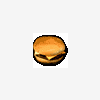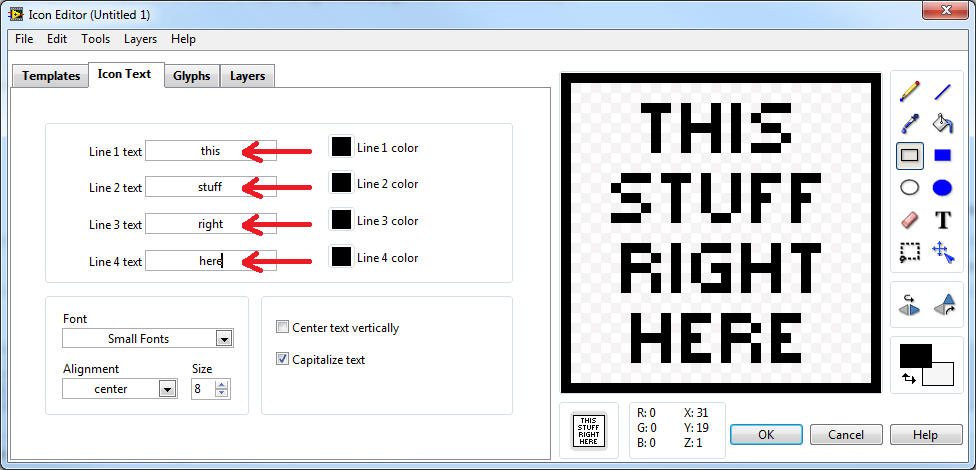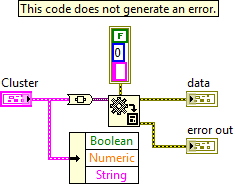-
Posts
628 -
Joined
-
Last visited
-
Days Won
69
Content Type
Profiles
Forums
Downloads
Gallery
Everything posted by Darren
-
I didn't think they did, but I was pleasantly surprised when I looked this morning. Here is the same property for the Tree (saved in 2012), also only available in 2012 SP1 and later. tree_FocusItem.vi Edit: Turns out the "Focus Item" property of the TreeControl class is only available in LabVIEW 2013 and later. My previous statement that it was available in 2012 SP1 is incorrect.
-
There are some private properties you can use in LabVIEW 2012 SP1 and later that allow you to set the focus row of a Listbox or Multicolumn Listbox programmatically. Whenever you programmatically change the value, if you also programmatically change the focus row, it should behave in the manner you're looking for. I had heard the behavior was fixed natively to the controls in LabVIEW 2013, but it appears to still be an issue that we have to workaround programmatically. This VI (saved in LabVIEW 2012) contains the private properties you would need. Again, these properties were added in 2012 SP1, so they're not available in an earlier version. Oh, and it was a top woman, not a top man, who added these private properties for us. Focus Row Properties.vi
-
In my case, the password they sent me had a lowercase "L" that looked like an uppercase "I". Once I figured that out, it worked for me.
-
Yes, Jack asked me to do some again. I promise I won't forget the lines to any this year.
-
I did get a chance to fix this issue for Quick Drop Ctrl-I in LabVIEW 2013. The issue has not yet been addressed for Ctrl-Shift-I.
-
Here's a VI that shows how to do the same thing, but with public properties/methods. Saved in LabVIEW 2012. Get Owning Project Name.vi
-
Argh! Force of habit giving that "VI Analyzer Tests" path, I guess. I've edited the post to refer to the "Quick Drop Plugins" location, and yes, you have to create it yourself.
-
Oops, I just double-checked in the code. The [LabVIEW Data]Quick Drop Plugins location for shared plugins is supported in LabVIEW 2010 and later. If you're in LabVIEW 2009, you have to put your plugin in the [LabVIEW 2009]resource location.
-
If you want a single plugin (saved in 2009) to be available in all installed LabVIEWs on your system (2009 and later), you can put the plugin VI here: [LabVIEW Data]Quick Drop Plugins
-
If you read the VI Name property of a subVI and it returns error 1099, then it's a missing subVI. At that point, you could read the Label.Text property of the subVI to get the name of the missing VI being referenced. To my knowledge, there is no way to retrieve the fully qualified name of a missing subVI.
-

Get connector pane 32x32 image - looking for better idea
Darren replied to Steen Schmidt's topic in LabVIEW General
I wrote this VI a while back for a colleague. It's not perfect, but it's the closest thing I've got. Saved in LabVIEW 8.6. Get Connector Pane Data Type Image.vi -
If I need the *value* of the variant, and I know it's an arbitrary simple numeric type, I'll always just cast it to an EXT with Variant to Data and go on my way, because I don't really care what specific numeric type it is. But if I need the *type* of the variant, I'll use the VariantDataType VIs (located in vi.lib\Utility\VariantDataType) because they give me that handy type enum. Since I've long-established that dichotomy for about a decade now, I guess that's why I never thought to do the error cluster type check your way.
-
Hey, neat! Your way of determining if a data type is an error cluster... ...is quite a bit simpler than the way I do it: Sorry to get off-topic, but I always like to recognize cleverness when I see it. The only time your way would run into trouble is when the variant is a cluster containing a non-I32 numeric type: In this case, since Variant to Data will convert any simple numeric type into any other simple numeric type without error, your way would determine that the cluster was an error cluster, but my way would not. Incidentally, this code that I use for determining if a type is an error cluster is located here: vi.lib\addons\analyzer\_analyzerutils.llb\VIAnUtil Check Type If ErrClust.vi.
-
Thanks for filing the CAR, Stephen...this thread fell off my radar. Yes, Stephen CARed the Delete From Array performance issue.
-
> ...I once needed to know if the output terminal of a compound arithmetic node was inverted, a small oversight in the scripting properties... For those that are curious, this scripting deficiency has been reported to R&D as CAR 197239, and is slated to be fixed in the next LabVIEW release.
-

Wizard for the new Project Template feature
Darren replied to John Lokanis's topic in Development Environment (IDE)
I have no current plans to write such a wizard. But if the demand is there, we'll look into it further. A few weeks ago I created a new sample project for a colleague as a proof-of-concept, and it only took me a couple of minutes to construct the XML for it. Since I didn't need to customize the second page of the wizard, that's all I needed to do. Granted, I'm already familiar with the XML tags, so I understand it might take a bit more work for someone creating content for the first time. I do recognize, though, that creating a customized second page is non-trivial. Our working assumption so far has been that customizing the second page is not something people will be doing that often. If it turns out to be a much more common use case, then I agree we will probably need something more automated, or perhaps a more documented template, to start that process. The current approach is to read the webpage you mentioned, and use the Actor Framework's custom second page code as a starting point. -

Wizard for the new Project Template feature
Darren replied to John Lokanis's topic in Development Environment (IDE)
If you already have a project that you want to appear in the dialog, and you don't need to customize the second page of the wizard, then the XML is all you need, and you can start with one of the shipping XML files in [LabVIEW]\ProjectTemplates\MetaData and modify your copy with your project's specific information. If you do need to customize the second page, then yes, there is more work to be done, but you can start with the Actor Framework's customized second page code (referenced on that webpage) and modify it for your project. -
Crap, it looks like it is. In my benchmarks in LabVIEW 2012, it looks like the Delete From Array "trick" is about 30 times slower than using Index Array. Oh well, I guess I won't use that trick anymore. Thankfully, Jarrod's Create Place VI Contents VI shortcut for Quick Drop made it really easy for me to add a shortcut to drop this code snippet instead:







